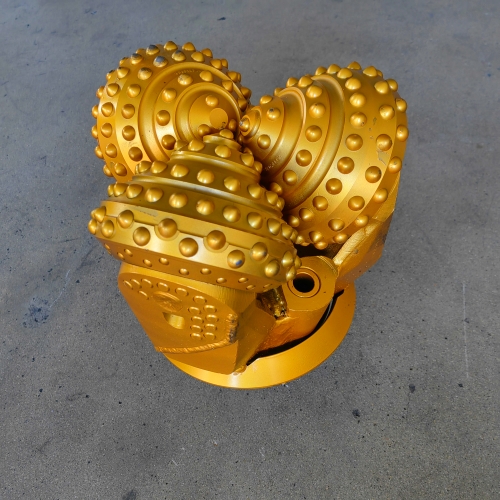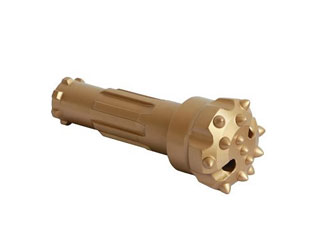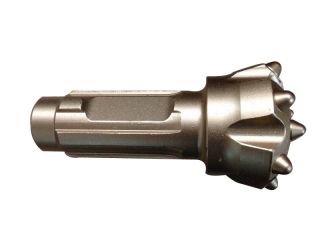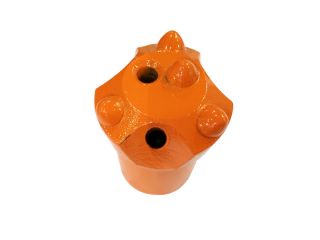Optimizing Tricone Drill Bit Design for Enhanced Performance
- Date:2023-10-28
- Share with:
![]()
1. Borehole Diameter:
When designing a tricone drill bit, the first and foremost consideration is determining the borehole diameter. This decision significantly influences the bit's diameter and other major parameters. The borehole diameter serves as the foundational basis for designing the drill bit and must take into account wellbore requirements, geological conditions, and performance criteria to ensure the best drilling outcomes.
2. Bit Diameter:
The diameter of a tricone drill bit is a central parameter that profoundly affects stability and drilling efficiency. Determining bit diameter necessitates considerations of:
- Axial Inclination: Axial inclination refers to the angle between the bit's axis and the wellbore axis, crucial for guidance and borehole direction.
- Axial Offset Value (S): The axial offset value (S) represents the lateral displacement of the bit's axis relative to the wellbore axis, vital for precise bit positioning.
- C-Point Size (C): The C-point size (C) pertains to the determination of the bit's center location, ensuring the bit rotates at the wellbore's center.
- Roller Cone Radius Size (R): The roller cone radius size (R) dictates the cone's dimensions, thereby influencing its gripping and cutting capabilities.

3. Gear Meshing Diagrams and Bottom Hole Crushing Diagrams:
Once the bit diameter is established, thorough calculations of gear meshing diagrams and bottom hole crushing diagrams are essential. These diagrams assist in precise performance calculations, including factors such as the overlay coefficient. Gear meshing diagrams help determine the right gear design to ensure efficient cooperation, reducing conflicts and wear. Bottom hole crushing diagrams focus on the bit's impact efficiency, encompassing the calculation of the overlay coefficient, crucial for enhancing drilling efficiency.
4. Consideration of Geological Rock Types:
The geological rock type profoundly influences drill bit design. Different rock formations may require various alloy tooth shapes, tooth heights, and tooth counts. Soft rock formations may demand more tooth counts and higher tooth heights to enhance cutting efficiency, while hard rock formations necessitate sturdier tooth shapes and materials to ensure bit durability.
5. Gear Design:
Gear design constitutes the core of a tricone drill bit. A rational gear design significantly impacts the bit's penetration capabilities and service life. Parameters such as gear shape, angles, and quantities require careful consideration. The selection of these parameters must balance penetration capacity, stability, and prevention of bit jamming.
6. Optimization of Tooth Height:
Tooth height is another parameter requiring optimization. It directly influences the cutting ability and wear resistance of the gears. During the design phase, different geological formations' tooth height requirements must be considered to ensure outstanding bit performance under various conditions.
7. Determination of Tooth Count:
Tooth count is also a crucial parameter. A higher tooth count generally implies greater cutting efficiency but may lead to faster wear. Therefore, when designing a tricone drill bit, a careful balance between tooth count and performance is necessary to meet specific operational requirements.
Designing a tricone drill bit is a highly intricate task that demands comprehensive consideration of multiple parameters and thorough optimization. The correct selection of key parameters such as borehole diameter, bit diameter, alloy tooth shape, tooth height, tooth count, and more is vital to ensure optimal performance and durability. Consequently, during the design process, it is imperative to fully assess wellbore geological conditions, bottom hole crushing diagrams, gear meshing diagrams, and the demands of diverse geological formations to design the most suitable tricone drill bit, enhancing drilling efficiency and reducing maintenance costs. Designers must amalgamate scientific calculations with engineering experience to achieve peak performance and reliability. The success of this process directly contributes to the advancement of the field of resource exploration and extraction.





